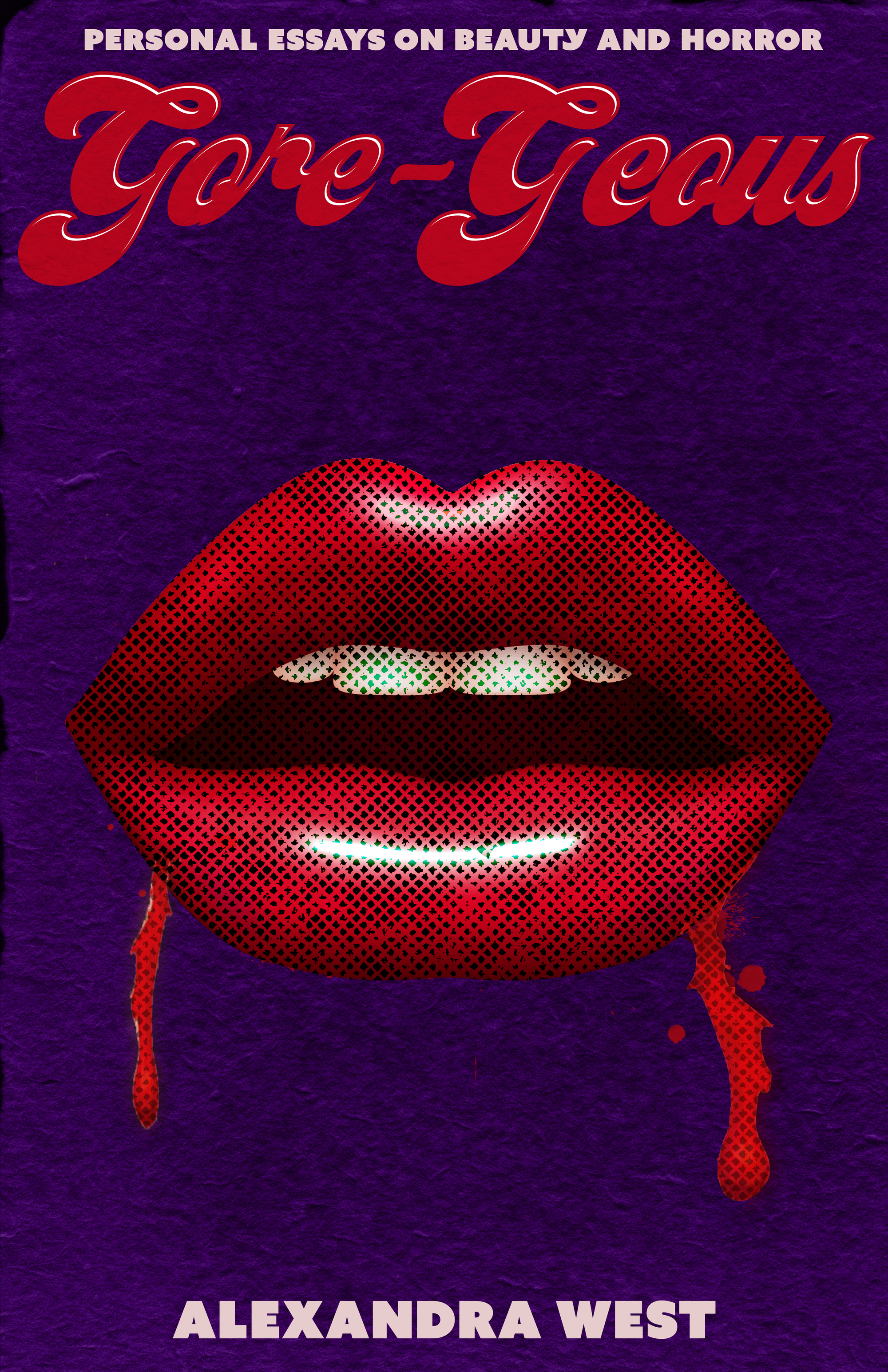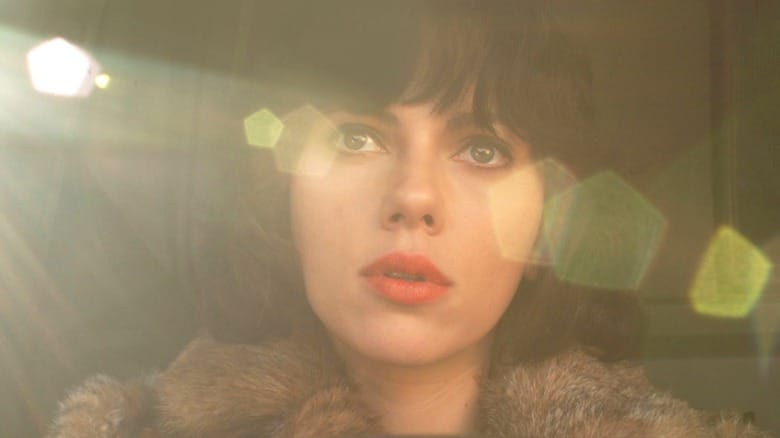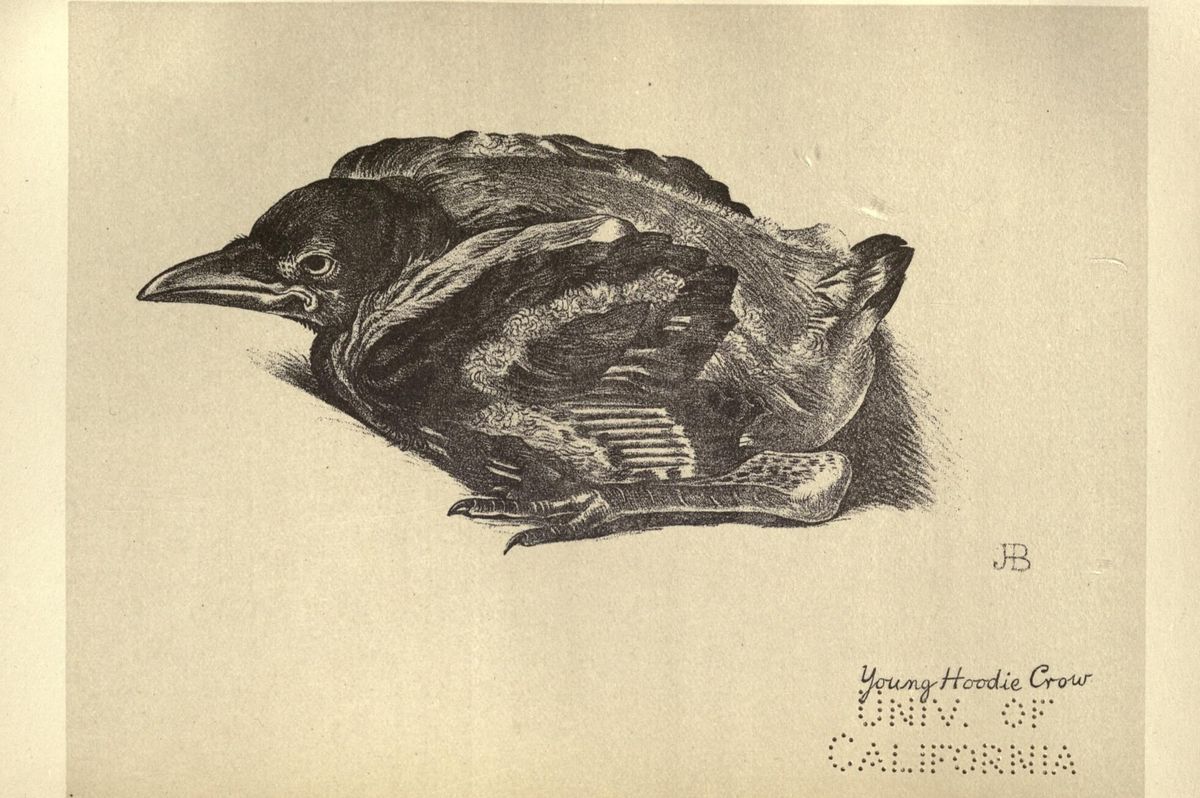A beautiful woman with malicious intent

Today we have an excerpt from the forthcoming book Gore-Geous: Personal Essays on Beauty and Horror by Alexandra West which you can pre-order here. It's a fascinating and revealing blend of personal essay writing and film criticism that explores the concepts of beauty standards and gender norms in films like Cat People (1942), The Witches (1990), Carrie (1976), Black Swan (2010), Audition (1999), American Psycho (2000) and Ready or Not (2019) and others.
This excerpt below concerns one of my favorite films ever Jonthan Glazer's Under the Skin.
Recently Corey Atad wrote for Hell World on the reception to Glazer's Oscar speech and Sean T. Collins wrote about the surveillance cinema in The Zone of Interest.



A beautiful woman with malicious intent
by Alexandra West
After writing two books focused on film analysis and theory I wanted to branch out and take a bigger writing swing. One of the benefits of doing the Faculty of Horror podcast for 10+ years is that listeners have gotten to know myself and my co-host Andrea Subissati. While we focus on horror film analysis that’s accessible and lively, parts of ourselves and our histories creep in. We use our experiences to explain where we’re coming from and what the films we discuss mean to us. As we’ve navigated the world of gaining and maintaining a platform, I’ve also felt the pressure of my physical appearance being weighed against me as people found out what I looked like and felt comfortable making assumptions about me. The issues of insecurity I struggled with from adolescence were becoming insurmountable the further I got into my career as the media I consumed aggravated that pressure. It is from that place of tension that Gore-Geous was born.
(Spoiler warnings for Under the Skin.)

Lady Danger: The Sexy Women of Cat People (1942) and Under the Skin (2013)
When I first saw Under the Skin in theaters, I had what I can only describe as a slight chill for the next 48 hours. It’s an intentionally meandering, challenging, and confrontational film about our species. I like to rag on films where the big reveal is that “humans are the real monsters”—but holy shit, will this film ever make you believe that. Glazer’s film is both low-fi due to its many hidden camera sequences, yet also highly technical in ways that border on director Stanley Kubrick’s darkly glossy future aesthetic from 2001: A Space Odyssey (1968). All the sequences set in and around humanity feel like a well-made low budget arthouse film, while the alien sequences are unfamiliar and sleek, in line with a high-brow science-fiction movie. We rarely see these two contrasting worlds exist within the same film and when these two disparate styles meet in the final moments of the film, the result is uniquely nightmarish.
Around the time Under the Skin came out, the PR narrative was that the first third of this film was shot with hidden cameras and used non-actors who didn’t recognize Scarlet Johansson, who wears a short dark wig and speaks in something like a British accent as she attempts to pick them up. Even in a disguise, the press suggested, Johansson could easily convince unsuspecting men to get into a car with her due to her beauty and forthrightness. It’s a neat trick and one that serves the film well as an introduction.
The Female’s beauty and costumes are designed to elicit a reaction from us; we scoff at her appearance which, while still beautiful, is miles away from ScarJo’s expertly coiffed red-carpet appearances. On one-hand the film shows us that she’s involved in a nefarious plot while also being coded as someone violence could happen against because her clothes and style label her as “available.” Visually she is, to use a Britishism, tarty.
The Female is an alien with an unknown purpose, designed to be beautiful. She’s not a natural beauty; she wears visible make-up, tight jeans, high heels, and a push-up bra under a fake fur coat. The Female is designed to lure unsuspecting men to a strange house where they are consumed by a gooey pool of darkness for unknown purposes.
The visual metaphors at play within the film are never more prominent than when The Female lures a few of the men she picks up back to the dilapidated house. As they disrobe, the men show clear signs of arousal as they become submerged in a pool of black goo and remain in stasis until their insides are (awesomely) sucked out.
Physicality is important to the film and to The Female’s self-awareness. The first moment where The Female breaks from her mission takes place when she picks up the character credited as The Deformed Man (Adam Pearson, an actor who has neurofibromatosis). His openness with her seems to soften The Female, and she rethinks her role in the operation. Perhaps she too recognizes the bizarre emphasis placed on appearances used to conceal true intent, something the film hints at in its opening moments as The Female disrobes a corpse that looks a lot like her with a tear running down its cheek. The Female is simply another form created in a long line of beautiful women who are eventually destroyed.
The Female does this job for a while but begins to soften towards humans and seems to want to be part of their world. She breaks free from the luring-men-to-their-death grift and makes a run for it where she meets a kind man (Michael Moreland) whom she stays with briefly. They try to have sex but given that her body is just a shell they are unable to consummate. She retreats to the Scottish Highlands and encounters a logger (Dave Acton) who begins to follow her. He attempts to rape her but is unable to do so. In the attack her skin breaks, revealing her alien body underneath, which prompts the logger to burn her alive.
Under the Skin is a film that feels incredibly original, but it contains visions that are hauntingly familiar. We marvel at how the film twists and turns throughout The Female’s journey at first feeling for her victims and then for her. We come to understand that despite how futuristic the film may posit itself as, it’s telling a story we’re all familiar with—a woman being murdered by a man when he is denied what he wants. The final moments of the film with the smoke billowing up amongst the trees is reminiscent of the witch burnings in Europe. The tale of an interloper with villainous intent preying on an unsuspecting population is a story that has been told time and again both in fiction and in propaganda. A beautiful woman with malicious intent, as we have already discussed, is nothing new.
Scarlett Johansson (who does some of her best work in this film) has long been recognized as a solid actor but also as a desirable body. We have been asked to look at her repeatedly, often in appreciation of said body. A few months before Under the Skin was released, Johansson was named Esquire’s Sexiest Woman Alive for the second time. In the accompanying article, writer Tom Chiarella describes their encounter thusly:
And I didn’t look at her ass. I don’t know that she wanted me to. Probably not. Surely not.…Her voice is a raspy frequency in the air. Legitimately as pertinent and defining a component of her physical makeup as her lips, her cheekbones, her legs.
Chiarella, it seems, is unable to see Johansson as a complete person. He only sees the actor as the body parts he would like access to. This is an on-going narrative surrounding Johansson since the opening, sheer-pantie’d moments of Lost in Translation (2003). Ten years later in Under the Skin, Glazer and Johansson are hell-bent in unraveling this narrative of bodies, autonomy and the creation of sexually charged desire.
Within Under the Skin, we experience a sort of dissonance between her sexualized body that we’re used to which asks: what is expected of that body, what’s done to that body, and what’s literally under the skin of that body within the film? It parallels the rarified space celebrities and attractive women occupy under the male gaze, one of titillation and then of fear. The Female exists within a structure, the same structure which has burned through several bodies just like hers. She starts as a terrifying cog in an alien machine who is unable to fill the role normally prescribed to women, so she is violently attacked. Under the Skin is an exploration of these themes we have been grappling with for a long time. Glazer’s film blends science-fiction, horror, and celebrity culture, with the ultimate question: what is identity and how changeable are our perceptions of it?
Alexandra West is the author of Films of the New French Extremity: Visceral Horror and National Identity and The 1990s Teen Horror Cycle: Final Girls and a New Hollywood Formula. She has written for Rue Morgue, Art of the Title, The Toronto Star and Offscreen Film Journal among others. She has co-hosted the Faculty of Horror podcast with Andrea Subissati since 2012.
Hi it's Luke again. I've plugged this piece from A Creature Wanting Form a few times already but since we're talking about Under the Skin today it seemed relevant.

You can read that whole story here if you like.

